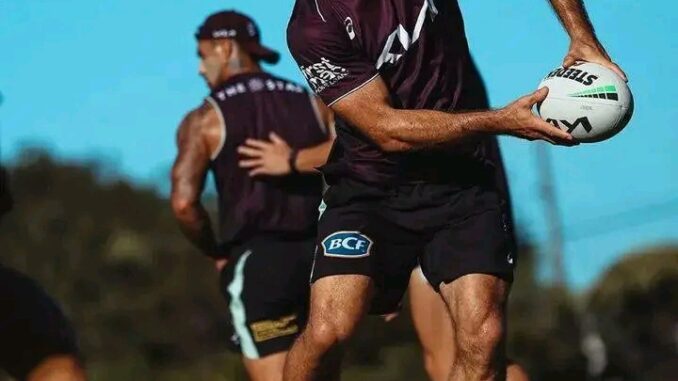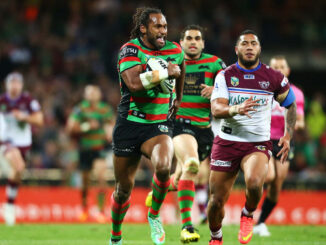
Hunt and Reynolds have become a formidable duo in breaking down opposition defenses, regularly working together to disrupt the defensive line and create opportunities for their teammates. Their ability to engage defenders and pull them out of position opens up space for other players, and one of the key beneficiaries of this tactical approach is Fullback Reece Walsh. By drawing defenders in, Hunt and Reynolds set the stage for Walsh to sweep around the back and exploit any gaps that may appear in the defensive structure.
The partnership between Hunt and Reynolds is built on an understanding of the game’s flow and a shared vision of how to manipulate the opposition’s defensive alignment. Both players possess the skill to attack both the short and long sides of the field, making them unpredictable and difficult for defenders to read. As they engage defenders, they often draw the attention of multiple players, which is an ideal scenario for creating space elsewhere. This allows Walsh to position himself in a way that maximizes his chances of making a break, as the defense is often caught out of alignment, focused on containing Hunt and Reynolds.
Reece Walsh, known for his pace and agility, is well-suited to take advantage of the gaps that are often left open following such tactical movements. As the ball is fed to him, he has the freedom to assess the defense and decide whether to carry the ball himself, link up with a support player, or try to weave his way through any defensive holes. Walsh’s quick footwork and ability to change direction at speed make him a dangerous option whenever the defense is stretched thin, and this is where the groundwork laid by Hunt and Reynolds proves invaluable.
This offensive strategy requires sharp decision-making and excellent communication among the players involved. Hunt and Reynolds must know when to commit to drawing defenders in and when to release the ball to ensure Walsh receives it in the best possible position. Timing is critical – too early, and the defense can reset, too late, and the attacking opportunity may be lost. Through repetition and understanding of each other’s playing styles, Hunt, Reynolds, and Walsh have refined this strategy, making it an increasingly effective tool in their team’s attacking arsenal.
Additionally, this approach has a psychological component. Defenders are well aware that Hunt and Reynolds can create chaos with their ability to manipulate defensive lines. This constant threat of misdirection forces defenders to remain alert and reactive, which can lead to mistakes or hesitance. When Walsh sweeps around the back, defenders may hesitate, unsure whether to commit to him or stay focused on the original playmakers. This hesitation is often enough to give Walsh the slight advantage needed to break through.
Overall, the combined efforts of Hunt, Reynolds, and Walsh highlight the importance of teamwork and tactical awareness in modern rugby league. By continually disrupting the defensive line, Hunt and Reynolds allow Walsh to capitalize on the space created, making them a trio that opposition teams must always account for. Their synergy on the field exemplifies the value of strategic play and the ability to work as a unit to break down even the most organized defensive systems.



Be the first to comment